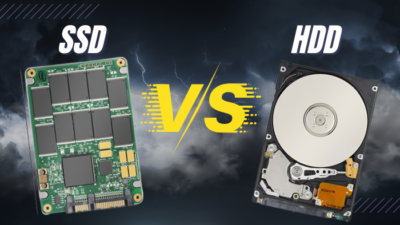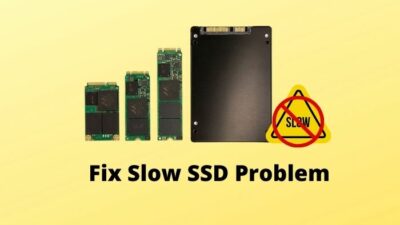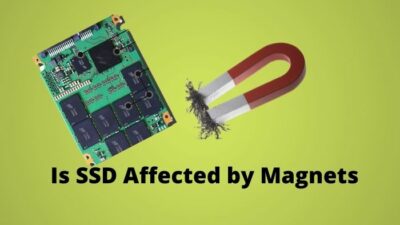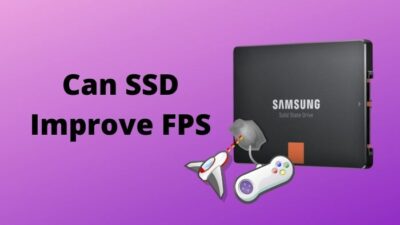Sometimes you need extra storage for keeping essential data, or you have a spare hard drive of an unused laptop that you want to add to your desktop.
One question then raised in your mind, whether you can use the laptop hard drive on your desktop or not?
The answer is Yes. You can use your laptop hard drive to add some extra storage to your desktop.
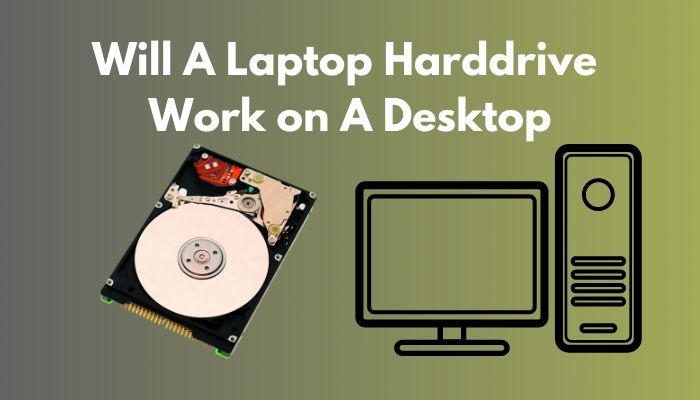
A few days back, I also connected a laptop hard drive to increase the storage of my desktop, and it ran perfectly. It also boosts the data transfer speed.
I can help you with this by sharing my own experience.
But, before you add the hard drive to your desktop, you should check the compatibility.
So, without wasting any more time, let’s start with the main topics.
Please, read the full post to know the details of adding your laptop hard drive to your desktop.
Does A Laptop Hard Drive work on a Desktop?
Laptops and desktops are two different versions of personal computers. They used quite similar technology to run themselves.
If we talk about the storage of these two versions of computers, Both use magnetically coated platters to save data called harddrive.
Both the hard drive spin the platters to record data. But they are different in size. Laptop hard drives are pretty smaller in size.
As both of them use the same technology, so there is a possibility to exchange hard drive between
themselves.
If you have an old unused extra laptop, then you can add the hard drive to your PC.
You may think about the process of connecting laptop hard drive to your Desktop. It’s not a complicated process. You can do this pretty effortlessly.
Let’s know the methods of connecting the laptop hard drive to your desktop.
Go through our epic guide on Fix Motherboard Can’t Detect Hard Drive.
How to Connect a Laptop Hard Drive to your Desktop?
You can connect your Laptop’s HDD to your Desktop in two different ways. If you want to connect it temporarily, then you can connect it with a USB cable to your Desktop. But you can also connect it to your desktop’s motherboard permanently.
Some motherboards don’t contain USB support, so you can use IDE to IDE and SATA to IDE to connect the motherboard.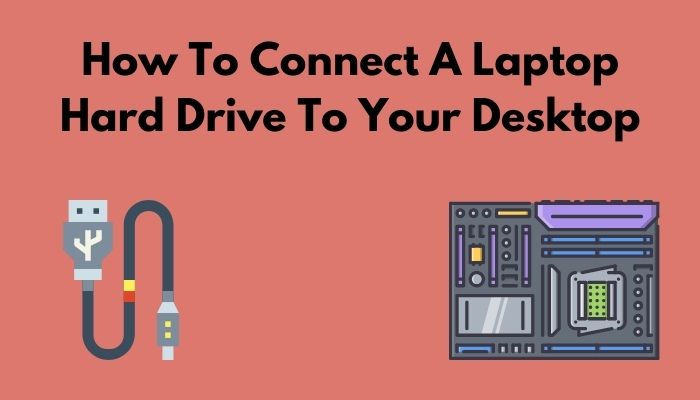
Here are the two methods of connecting your Laptop hard drive to your Desktop:
- Connect via a USB cable.
- Connect with the Motherboard.
In a hurry? Check out my new post on What are the fastest PCIE 4.0 SSDs.
Connect Via a USB Cable
Sometimes you need some extra storage temporarily for saving a large for work purposes. You can connect your laptop’s unused hard drive to cover the situation. Just use a USB cable and connect the HDD to your desktop.
If you connect the HDD with the USB cable, there is no need to disassemble any components of your Desktop.
There are several methods to connect HDD with a USB cable, and three ways are most common.
Here are the three methods to connect HDD through a USB cable:
Connect With Hard Drive Case
Connecting HDD with a removable case is the most convenient and easiest way to connect the hard drive; it is a kind of automatic process because all the plugins ( SATA and power ) are included in the Case.
First, you have to choose a compatible HDD case for your laptop’s HDD. You can collect this from a computer store or order online from an authentic e-commerce store once you acquire one.
Then you got to know the connection methods.
It’s a pretty straightforward method. Put the HDD in the case and connect it with the USB connector of the case.
The case not only works as a connector but also as a protector of your HDD.
You should notice the size and cable connector compatibility before purchasing one for your HDD.
Check out our separate post on SSD good for Gaming.
Connect Via A Docking Station
This is another primary method to connect a Laptop’s hard drive to the desktop. A docking station is a universal port replicator that allows a computer to connect with another device. So, you can connect your hard drive via a docking station.
Another advantage of the docking system is that you can connect more than one HDD at the same time. You can put hard drives of different sizes in the dock and connect them to the Desktop.
You can get a docking system in a computer store or an online store if you want to purchase it from an online store never forget to read the product review.
Always try to buy a docking system that supports multiple hard drives simultaneously.
Follow our guide to fixing Can SSD Overheat.
Connect With An Adaptor
Connecting a hard drive with an adaptor is an old and most used technique to connect an HDD to a desktop. Just connect the HDD with the adapter and put the USB cable of the adapter to the PC’s USB port for connection.
There are a lot of Adapters available in the market but always choose the suitable one. You can find a suitable 2.5-inch hard drive adapter with a USB cable in your nearby windows store.
Remember to check the compatibility of the cable first. Suppose your PC’s USB ports are USB 3.0, then you should use the compatible one, I mean USB 3.0 adapter.
These are the three primary methods to connect your laptop hard drive to your desktop with a USB.
You can also connect it to your motherboard.
In the next portion of the post, I will describe the details on it.
Connect With The Motherboard
As I mentioned previously that both versions of computers use the same technology for saving data. So, naturally, hard drives from both devices are pretty identical except for one significant change.
The Size. Laptop hard drives are pretty smaller than the desktop’s hard drive. But it doesn’t affect on the connection method.
You can connect the laptop hard drive to your desktop unless it is incompatible. So check the compatibility of your motherboard and hard disk compatibility.
If the HDD matches, then start the process of connecting the HDD.
Before that, you need to get the required cables and adapter for connection. Check the specification of both HDD and motherboard before purchasing.
As the laptop’s HDD is smaller in size, it can’t fit into the regular Desktop hard disk case. So, buy one for the laptop also.
Now, start the process.
Here are the steps of connecting the Laptop’s hard drive to the desktop motherboard:
- Remove the HDD from your Laptop.
- Turn off the PC and open the CPU case.
- Connect it with the adapter of the PC.
- Connect the HDD with the motherboard with specific cables.
- Start the PC.
- Check The BIOS settings for HDD.
These are the Steps for connecting HDD with the motherboard.
These methods will succeed if the HDD connector is compatible. Compatibility is the biggest obstacle for connecting the HDD to the desktop.
Also, check out our separate post on fix internal Hard Disk keeps disconnecting.
Barriers
If you have a motherboard that contains PS2 or Add-on support for connecting hardware, then it is impossible to connect a laptop hard drive into it.
Because most often, Laptop contains SDE or SATA for connecting HDD. Nowadays, they support SSD also.
So, your desktop motherboard at least has compatibility with IDE and SATA for this connection. You can get a good data transfer rate.
You can connect an SSD with desktop that only have IDE.
Conclusion
Laptops and desktops are one of the most brainiest technological revolutions of time. These are the two different versions of the personal computer. But their components of them are similar but distinguished by size only.
So you can use some laptop components on your desktop if they are compatible. The hard drive is one of them.
Through the post, I tried to describe the methods of connecting a laptop’s HDD to your desktop.
Hope you find the post, legit and helpful.
I also hope that it will give you the support when you will try to connect your laptop’s HDD to the desktop PC.

